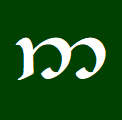5.61 Meat ᴹQ. apsa n. “meat, cooked food” A noun for “cooked food, meat” in The Etymologies of the 1930s derived from the root ᴹ√AP (Ety/AP). The word apsa “meat” also appeared in notes on The Feanorian Alphabet from the 1930s and 40s (PE22/21, 50), though in the 1940s version
Select Elvish Words
Studies on selected elvish words to sort out their semantics.
Select Elvish Words 5.53-5.57: Dough, Flour, Grind, Mill
5.53 Dough ᴹQ. makse n. “dough” A word for “dough” in The Etymologies of the 1930s derived from primitive ᴹ✶mazgē under the root ᴹ√MASAG “knead” (Ety/MASAG), where zg unvoiced to sk and then the sk underwent metathesis to ks. N. moeas n. “dough” A word appearing as N. moeas “dough”
Select Elvish Words 5.51: Bread
5.51 Bread Q. coimas (*coimass-) n. “life-bread, lembas” A Quenya term for “lembas” (Elven waybread) but of different etymological origins appearing in notes from the 1950s, a combination of √KOY “live” and a reduced form of massa or masta “bread” (PM/395, 403-4). As such, its stem form is likely to
Select Elvish Words 5.41-5.45: Meals
5.41 a Meal ᴹQ. mat (matt-) n. “meal, [ᴱQ.] meal time; ⚠️[ᴹQ.] food” A noun glossed “food, meal” in the Declension of Nouns from the early 1930s with a stem form matt- (PE21/27), clearly based on ᴹ√MAT “eat”. Tolkien specified that as the suffix -mat, it was the basis of
Select Elvish Words 5.34-5.37: Pitcher, Cup, Spoon
5.34 Jug, Pitcher ᴱQ. olpe n. “bottle” An isolated word without a root appearing as ᴱQ. olpe “bottle” in the Qenya Lexicon of the 1910s (QL/69). Neo-Quenya: I’d retain ᴺQ. olpë “bottle” for purposes of Neo-Quenya as we have no other later alternatives. ᴱQ. ulma n. “flagon, *pitcher” A word
Select Elvish Words 5.25-5.33: Oven, Pot, Dish, Bowl
5.25 Oven ᴱQ. urna n. “oven” A noun appearing as ᴱQ. urna “oven” in the Qenya Lexicon of the 1910s under the early root ᴱ√USU or ᴱ√UŘU [UÐU] whose derivatives had to do with burning (QL/98). Neo-Quenya: I would retain ᴺQ. urna for purposes of Neo-Quenya, reconceived of as a
Select Elvish Words 5.17-5.24 to Blend, Cook, Bake
5.17 to Mix, Blend Q. ostimë n. “blend” A word for a “blend” appearing in notes associated with the Quendi and Eldar essay from 1959-60, more specifically “the running together of two elements” (VT39/9). It appeared only in its plural form ostimi “blends”. In the context where it appeared, it
Select Elvish Words 5.15-5.151: Thirst, Thirsty
5.15 Thirst ᴱN. faus n. “thirst” A word appearing as ᴱN. faus “thirst” in Early Noldorin Wordlists of the 1920s, a noun form of better known faug “thirsty”. Conceptual Development: In the Gnomish Lexicon of the 1910s Tolkien had G. luist “thirst” and variant luibri (GL/55) clearly from the early
Select Elvish Words 5.14: Hunger
5.14 Hunger Q. maita adj. “hungry” An adjective for “hungry” in notes from around 1960 derived from the root √MAT “eat” via i-infixion (VT39/11), which produced a small class of desiderative words in Quenya, as in “desiring to eat”. ᴱQ. saike n. “hunger” A noun appearing as ᴱQ. saike (saiki-)
Select Elvish Words 5.13: to Drink
5.13 to Drink ᴱQ. socto- n. “to give to drink, drench” A verb appearing as ᴱQ. {sokta-} >> sokto- “give to drink, drench” in the Qenya Lexicon of the 1910s under the early root ᴱ√SOKO with derivatives having to do with “drink” (QL/85). Neo-Quenya: Since √SOK reappears in Tolkien’s later




